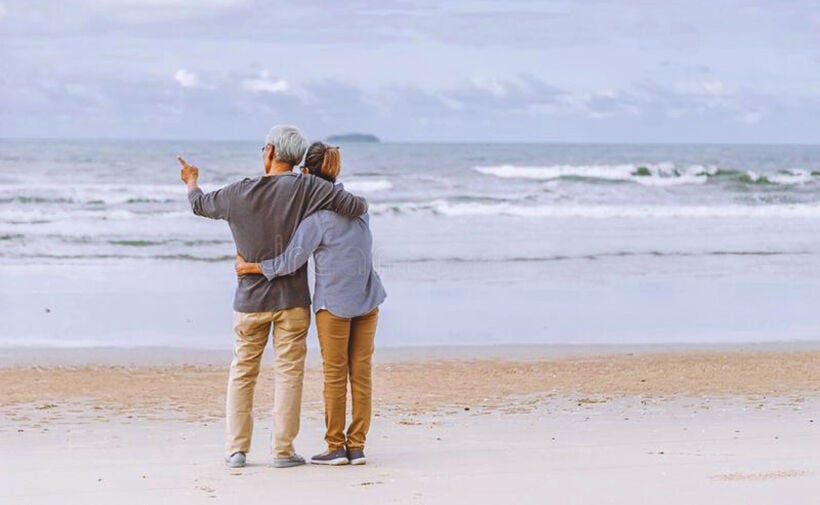Travel Guide: Top places to retire in Asia 2022

Retiring in Asia is a dream for many, with fond memories of short or longer travel to some of the humid and exotic countries in the region. All that exquisite cuisine, diverse sceneries, fascinating histories, intriguing temples, tropical adventures, colourful nightlife, and markets and malls for shopping. Lots of shopping.
So it’s easy to become enamoured with all things “Asia.” But living for a longer time, or retiring, is an entirely different proposition. Whilst we can recommend some good and bad points about some of your Asian retirement candidates, some things you simply won’t know until you give your prospective retirement choice a proper test drive — go and live there for a few months as a ‘local.’
All locations have different requirements and rules that make the paperwork either more difficult or easier. But once that’s over there’s a lot more to consider as regards renting properties, driving, cost-of-living, your adaptability to a different culture and opportunities to make new friends or establish a relationship.
Asia is broken up into a lot of separate countries, each with their own culture, food, history and religious practices. It’s also grouped into different regions. Although there are noticeable similarities among them, no two Asian countries are the same and you would be well advised doing plenty of research — and travel — before making your final decision. That said, all the locations on our list fall within Southeast Asia specifically.
In all cases there are visa agents who will prepare a lot of the paperwork and short-circuit the process of gaining an appropriate and legal visa. You should meet with these agents on one of your visits to go through the fine print of retiring or long-term stays in any of these countries. It’s best to get a recommendation for these services as the internet is littered with scams for visa services.
THAILAND
Thailand is known as “The Land of Smiles” and, culturally, Thai people are inclined to smile and enjoy foreigners living in their country. But there’s plenty to unpack in regards to the ubiquitous Thai smile, let alone where foreigners may want to live.
The capital city is the colourful and contrary Bangkok, and it’s the main the travel hub for entering the country, and for connecting flights to neighbouring countries. Greater Bangkok has an estimated population of around 11 million people. The currency is the Thai baht (THB).
- Read Key info for those planning to retire in Thailand
- Read Retiring in Thailand, most of the things you need to know
There’s plenty to enjoy… a low-cost of living, a huge selection of amazing beaches, a tropical climate, excellent health care options, a huge selection of either ‘very’ local living or mixing it up with other foreigners.
There’s also a well established ‘retirement’ visa which, whilst a bit onerous to apply for first up, is then renewable on an annual basis. You need to be 50 years of age and there are minimum income requirements.
Although the visa has become a little more complicated in the past 5 years, Thailand still offers one of the easiest lives for retirees in Asia.
- Read Red tape remains for foreign retirees in Thailand
- Read Thailand ranks as the best country in Asia to retire — International Living Magazine
As regards costs, it can be one of the cheapest options in the region, depending on whether you choose to live ‘up country’ or in one of the tourist magnets like Pattaya, Phuket, Hua Hin, Chiang Mai or Bangkok. But even in these locations there are plenty of less expensive options.
You will find a version of English is spoken in many of the touristy areas, whilst out of town you’re going to battle with the lack of any language other than Thai.
Out of all the Asian languages, Thai is perhaps one of the most difficult to learn because, like Chinese, it’s a tonal language. But unlike Chinese, it does have an alphabet. The same goes for neighbouring Laos, Vietnam and Myanmar.
Thailand’s most prominent religion is Buddhism, with an estimated 85-95 percent of the population identifying as Buddhists, though it is not enshrined in the country’s constitution. Followers of many faiths enjoy a great degree of religious freedom in Thailand.

MALAYSIA
Malaysia is constantly shortlisted in Top 10 lists of places to retire in Asia. The country is located directly south of Thailand, as you head south down the Malay Peninsula. It also has beautiful beaches, islands, rainforests and several big cities.
The capital city is Kuala Lumpur with a population of nearly 8.5 million people. Like Bangkok, it’s also a major travel hub and most international flights will pass through here on the way to domestic locations or other neighboring countries in SE Asia. The currency is the Malaysian ringgit (MYR).
English has become an unofficial second language in the country although Malay is the national lingo. Compared to Thailand, the English in Malaysia is a lot more widespread. But you might find Malaysia lacks a lot of the ‘exotic’ vibe Thailand offers, while still being rich in its own history and traditions.
But, having a large international airport at its centre links you within a few hours’ reach of the many Asian countries, with daily flights from Kuala Lumpur to the world’s capitals.
Malaysia’s national religion is Islam.
SRI LANKA
Sri Lanka is a huge, pearl shaped island nation in the Indian Ocean, just south of mainland India. It’s separated from the Indian subcontinent by the Palk Strait and the Gulf of Mannar, and borders the Bay of Bengal to the southwest and the Arabian Sea to the southeast.
It offers much the same hot and humid climate, along with a true multicultural experience, that has been attractive to retirees for many years. There’s the choice of tropical coastlines or the more temperate zones in the overlooking hinterlands.
The capital city is Colombo with an estimated population of nearly 800,000. The currency is the Sri Lankan rupee (SLR).
Sri Lanka offers the “Dream Home Visa Programme” for retirees over the age of 55 who meet the country’s financial requirements. A renewable 2 year visa is on offer.
Sri Lanka is formerly known as Ceylon, the namesake of the world famous tea. The island nation is a richly diverse with its bustling coastal capital of Colombo and more relaxed towns like Negombo, Galle or Kandy offering beautiful white sand beaches and nearby mountain forests.
Many retirees in Sri Lanka love the amazing food, low cost-of-living and friendly, mostly English-speaking locals.
Buddhism is the island’s most popular religion, with Hindu, Islam and Christian minorities.

CAMBODIA
Cambodia has emerged from a dark time in the 1970s to become one of the rising stars for retirees seeking a hotter climate with a lower cost of living. The capital is Phnom Penh with an estimated population of around 2.3 million people.
Whilst it has a little less to offer in the way of variety of locations for retirees, many people are pitching their tent in this upcoming retirement haven.
Bordering Thailand, Vietnam, Laos and part of the Gulf of Thailand, Cambodia shares much of its cultural history with its neighbours in regards to religion, food and a hot weather lifestyle.
The official language is Khmer, which, unlike its linguistic neighbours, is a non-tonal language. The currency is the Cambodian riel.
One plus for Cambodia is the relative ease of getting long-term visas to live there. Some of the published requirements, which some retirees may find difficult to meet in other Asian countries, are not applicable in Cambodia.
Still, outside of Phnom Penh, Siam Reap and Sihanoukville, there are few locations that will provide most retirees with the facilities they’ll need as they get older.
According to worldpopulationreview.com… “Cambodia’s rural communities lack clean water and proper sanitation, and generational poverty is a serious problem in the country.”
Most Cambodians follow a Buddhist way of life.
BALI
As distinct from Indonesia generally, Bali is an island with its own unique culture, lifestyle and cost-of-living.
Despite Bali’s being located directly to the east of Indonesia’s main island of Java, it couldn’t be more different. Primarily a tourist destination, Bali has become a favourite location for expats and retirees, from the main city centre of Denpasar, the tourist ‘beach’ areas of Kuta Beach, Jimbaran Bay, Seminyak and Nusa Dua, to the hills of Ubud.
You’ll need to be 55 years of age and meet the financial requirements to live there as a retiree. You will also have to be from one of the eligible 52 countries to be able to retire in Bali, or anywhere in Indonesia.
Bali offers unique landscapes, surf, beaches, a Hindu-based local culture, year-long warm climate, all with a reasonable price tag, though that price tag has been creeping up over the past decade. It also has a very own active volcano!

VIETNAM
Vietnam has rocketed to the attention of international travellers and retirees over the past decade, quickly opening up to provide excellent options for living out a warmer, comfortable life in retirement.
But, upfront, it’s also one of the most difficult to apply for, and receive, a long-term visa. Currently, only a short term tourist visa, a business or investor visa is available.
The situation, however, is quite dynamic and Vietnam is worth the wait if you’re not wanting to retire tomorrow.
The currency is the Vietnamese đồng (VND) and the official language is, you guessed it, Vietnamese.
Vietnam has plenty of exquisite scenery, sweeping beaches, cute towns and plenty of healthy and delicious food, albeit without much of the spice you’ll find in nearby Thailand.
There are two main cities — the capital of Hanoi in the north and Ho Chi Minh City in the south, along with the central Vietnamese coastal strip facing the South China Sea.
These three regions have plenty of foreigners. And if you want the tropical island feel, head to Phu Quoc, a rising star in Southeast Asia’s tropical island choices.

PHILIPPINES
The Philippines is already becoming a popular destination for international travellers. Its popularity as a retirement option automatically follows.
Blessed with more year-long hot weather, the Philippines is an archipelago of 7,000 islands. So there’s plenty of excellent beaches, 5,000 of the islands are inhabited.
The Philippines has a similar low-cost of living, when compared to your spending in Western countries.
The currency is the Philippine peso (PHP), the capital city is Manila and the official language is Filipino, or Tagalog, though English is also an official language, which the government often uses in official communications.
In fact, that’s a big reason why the Philippines is gaining popularity among English-speaking foreigners… almost everyone in the country can speak English to some degree making it one of the largest English-speaking nations in the world.
The Philippines was colonised for more than 450 years, firstly by the Spanish and then by the US, up to 1948, so a lot of the political systems, architecture and culture represent more of a Western vibe when compared to other parts of Asia.
The country is also deeply Catholic, about 86% of the population.
Like some of its Southeast Asian counterparts, the Philippines has a dedicated visa for retirees. You will need to be at least 50 years of age and have minimum financial requirements. There’s also an option for younger long-stayers between the ages of 35-49.
Latest Thailand News
Follow The Thaiger on Google News:


























